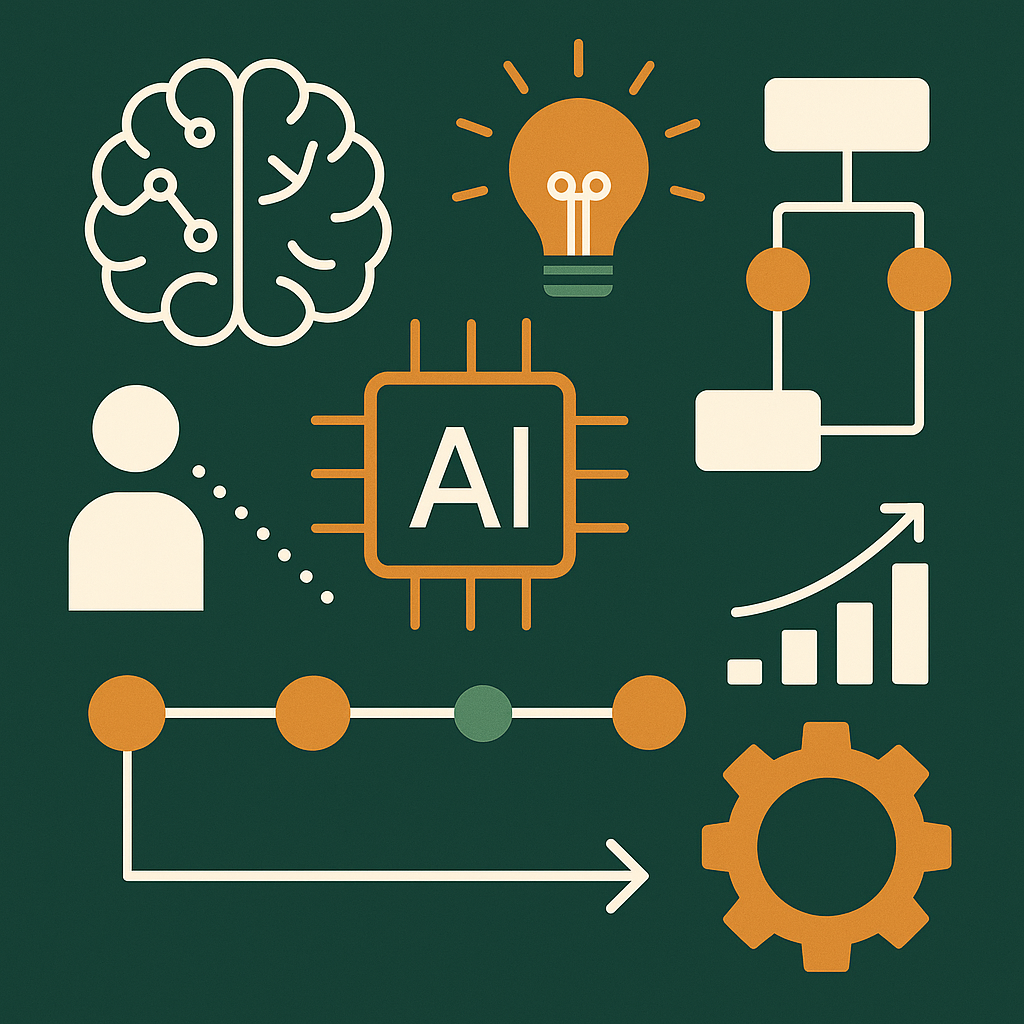Artificial Intelligence (AI) has shifted from being a buzzword to a mission-critical capability for modern businesses. From marketing and sales automation to predictive analytics and customer experience, AI is reshaping the way organizations operate. Yet, one question remains for decision-makers: how do you create an effective AI roadmap that drives measurable ROI?
In this guide, we’ll explore what an AI roadmap is, why it matters, and the key steps to building one for 2025 and beyond.
What Is an AI Roadmap?
An AI roadmap is a structured plan that outlines how an organization will adopt and scale artificial intelligence technologies. It covers strategic goals, implementation phases, required resources, and measurable milestones. Unlike ad-hoc experiments with AI tools, a roadmap ensures alignment between AI investments and business outcomes.
Why Your Business Needs an AI Roadmap
Companies adopting AI without a strategy often face fragmented solutions, wasted budgets, and employee resistance. A clear roadmap provides:
- Strategic Alignment: Ensures AI projects support core business goals.
- Resource Efficiency: Optimizes budget, infrastructure, and team allocation.
- Risk Management: Anticipates ethical, compliance, and data privacy challenges.
- Scalability: Lays the foundation for long-term AI maturity.
According to PwC, AI could contribute $15.7 trillion to the global economy by 2030. Businesses that fail to create a roadmap risk being left behind.
Key Components of an AI Roadmap
- Vision & Business Goals
Define how AI supports your growth strategy: cost reduction, customer retention, revenue expansion, or innovation. - Current State Assessment
Audit existing data infrastructure, analytics maturity, and available talent. - Use Case Prioritization
Start with high-impact, low-complexity AI projects such as customer service chatbots, demand forecasting, or marketing automation. - Data Strategy
High-quality data is the backbone of AI. Establish governance, pipelines, and compliance protocols (GDPR, HIPAA, etc.). - Technology Stack
Choose tools and platforms: cloud AI services, MLOps pipelines, or custom machine learning models. - Talent & Culture
Build cross-functional teams of data scientists, engineers, and domain experts. Train non-technical staff to embrace AI adoption. - Governance & Ethics
Define policies for transparency, bias mitigation, and responsible AI. - Execution Timeline
Break the roadmap into phases (3–6 months each) with measurable KPIs.
Example of a 12-Month AI Roadmap
- Months 1–3: Data audit + small pilot (e.g., predictive analytics in marketing).
- Months 4–6: Deploy automation tools (e.g., AI-powered CRM workflows).
- Months 7–9: Expand into advanced analytics (churn prediction, revenue forecasting).
- Months 10–12: Establish MLOps for scalability + governance framework.
Common Challenges in AI Roadmaps
- Data silos that limit insights.
- Unrealistic expectations about AI capabilities.
- Change resistance among staff.
- Vendor lock-in with proprietary platforms.
Pro tip: Start small, prove ROI, then scale responsibly.
The Future of AI Roadmaps in 2025 and Beyond
With Generative AI, vector search, and AI-driven SEO (GEO) reshaping industries, tomorrow’s AI roadmaps must emphasize agility and continuous learning. Businesses that monitor AI trends, ethical standards, and evolving regulations will gain a competitive edge.
An AI roadmap is no longer optional, it’s a strategic blueprint for digital transformation. By aligning AI with business goals, prioritizing use cases, and building a scalable foundation, companies can move from experimentation to measurable impact.
Whether you’re a startup or enterprise, the right AI roadmap ensures that every investment in artificial intelligence drives growth, innovation, and resilience.


